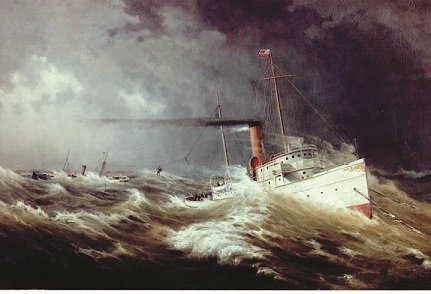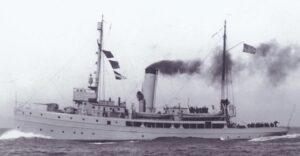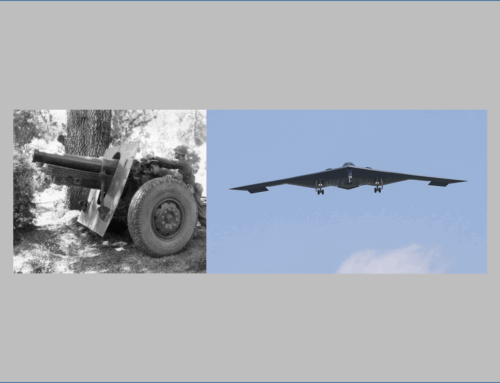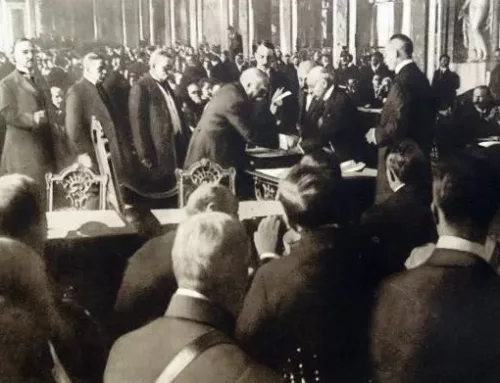The Long Blue Line: A most unusual cutter—Revenue Cutter Service and Coast Guard Cutter Snohomish
Published: 7 April 2023
By Cmdr. Timothy R. Dring, U.S. Naval Reserve (Retired)
via the United States Coast Guard web site

1909 Snohomish (NARA)
Norfolk-built cutter, designed for the Pacific Northwest coast, served in the Atlantic during WWI.
Among all the vessels built as cutters for either the U.S. Revenue Cutter Service or Coast Guard, one of the most unique was the Cutter Snohomish.
The cutter was built in 1908 as a direct result of Congressional legislation passed to address a shortage of maritime rescue resources in the Pacific Northwest. This shortage was tragically demonstrated by the 1906 wreck of the steamship Valencia on the rugged and sparsely settled coastline of British Columbia. The steamship’s 136 passengers and crew lost their lives because no means of rescue existed at that time from seaward or shore. The Revenue Cuter Service responded by building a new tug-type cutter to be stationed in the area to assist the U.S. Life-Saving Service with area shipwrecks.

A contemporary painting recounting Cutter Snohomish’s daring rescue of the crew of steamer Nika. (U.S. Coast Guard Collection)
The Snohomish was built by the Pusey & Jones Shipbuilding Company in Wilmington, Delaware specifically for the Pacific Northwest coast. The cutter was designed as a steam-powered coastal/open ocean tugboat with 880 tons displacement, 152-foot overall length, 29-foot beam, and nearly 16-foot draft; roughly the same size a modern Fast Response Cutter. Because of its intended operating area, which could include some very remote locations, the Snohomish was also provided with a then state-of-the-art wireless radio outfit.
On Dec. 10, 1908, after commissioning, the Snohomish began its journey from Norfolk, Virginia, to the cutter’s assigned operating area of the Pacific Northwest. Because the Panama Canal did not exist in 1908, Snohomish had to steam south around Cape Horn via the Straits of Magellan. The cutter entered the Pacific Ocean and steamed north along the coasts of South and Central America to the West Coast. In transit, the ship encountered stormy seas that flooded several compartments and damaged structures and equipment. On March 28, 1909, the cutter arrived at the Revenue Cutter Service depot at Port Townsend on Puget Sound, Washington after a voyage of 118 days.
The primary cutter base of operations for Puget Sound area was Port Townsend, Washington. However, the Snohomish was assigned to operate out of a sub-station established at Ediz Hook across from Port Angeles. At this location, the ship’s crew constructed a small supply dock and storehouse for storing coal, rope, marine hardware and ship’s boats. In 1911, the ship’s crew built an additional boathouse plus a small marine railway at Ediz Hook. Out of this base, the Snohomish would sail out to Neah Bay and the area around Tatoosh Island to patrol for ships in distress.

World War I photograph of Snohomish under full head of steam with 3-inch deck gun, added flying bridge and haze gray paint scheme. (Courtesy of NOAA)
Not long after the 1915 merger of the Revenue Cutter and Life-Saving services to form the U.S. Coast Guard, the U.S. entered World War I. Like other wartime situations, the Coast Guard became a part of the U.S. Navy, and nearly all the cutters changed their operational command to the Navy. For the Snohomish, this required a change in armament from a small one-pounder gun to a larger three-inch bow gun, along with additions to the cutter’s crew, and a temporary reassignment to the East Coast.
On Feb. 16, 1918, the Snohomish left Puget Sound Naval Shipyard towing a Navy coal barge, and proceeded south down to the Panama Canal, arriving there March 27. Two days later, after passing through the canal, the cutter headed to Key West, Florida, arriving on April 6th. Snohomish then traveled to Norfolk, Virginia, arriving on April 15th, almost 10 years to the day from the cutter’s first departure from Norfolk to the West Coast.
Over the next year, Snohomish became an auxiliary tug for the Navy and escorted convoys of 110-foot submarine chasers from Bermuda across the Atlantic to the Azores. Like other military units, the cutter suffered an outbreak of the infamous 1918 Spanish Influenza while in Bermuda, losing one crewmember at the hospital in Bermuda. So many of the crew were incapacitated by the flu that Snohomish could not sail for some weeks.
Read the entire article on the USCG web site.
External Web Site Notice: This page contains information directly presented from an external source. The terms and conditions of this page may not be the same as those of this website. Click here to read the full disclaimer notice for external web sites. Thank you.



